Comprehensive Guide to Using Home Security Systems for Optimal Safety
Mastering Home Security: The Complete Guide to Safeguard Your Home, Loved Ones, and Peace of Mind
How to Use Home Security Systems, Learn how to use home security systems effectively. Discover expert tips, setup instructions, and ways to maximize the protection for your home. Secure your property today!
This guide dives deep into home security systems, offering you practical, easy-to-follow steps on how to set up, use, and enhance your security setup to protect your home and loved ones.
.
Outline
1.Introduction
◦ Importance of Home Security Systems
◦ Who Should Use Home Security Systems?
2.Choosing the Right Home Security System
◦ Understanding Different Types of Systems
◦ Features to Look for in a Home Security System
3.Installation Process: Step-by-Step Guide
◦ DIY vs. Professional Installation
◦ Essential Tools for Installation
4.Setting Up Your Home Security System
◦ Connecting and Configuring the Devices
◦ Placement Tips for Cameras, Sensors, and Detectors
5.How to Use Home Security Systems Daily
◦ Arming and Disarming Your System
◦ Managing Alerts and Notifications
6.Advanced Features You Should Be Using
◦ Remote Access and Monitoring
◦ Integrating Home Automation
7.Preventing False Alarms
◦ Common Causes and Solutions
◦ Best Practices to Avoid False Alarms
8.Maintenance and Troubleshooting
◦ Regular System Checkups
◦ Common Problems and How to Fix Them
9.The Future of Home Security Systems
◦ Trends in Home Security Technology
◦ Smart Home Security Innovations
• Key Takeaways and Action Plan
.
Keywords:
• Use of home security systems
• How to install home security systems
• Advanced home security features
• Smart home security setup
• DIY home security installation
• Remote monitoring home security
• Preventing false alarms in home security
• Troubleshooting home security systems
• Home automation security integration
Internal Links:
2.DIY vs. Professional Home Security Installation
4.The Top Home Automation Gadgets for Home Security
5.Latest Trends in Home Security Technology
External Links:
.
How to Use Home Security Systems
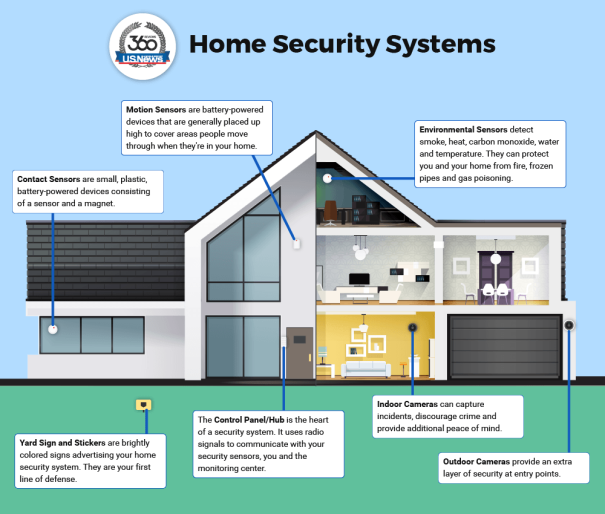
Introduction
Your home is your sanctuary—it’s the place where you should feel the safest. But in today’s world, with rising concerns about burglaries, break-ins, and unexpected incidents, simply locking your doors and windows isn’t enough. Home security systems provide a vital layer of protection for homeowners, giving them peace of mind while offering a practical solution to ensure their safety and that of their loved ones.
You may have already heard about the basics of home security systems or even own one, but are you using it to its full potential? In this comprehensive guide, we’ll delve into everything you need to know about how to use home security systems—from choosing the right system to optimizing its daily use, preventing false alarms, and even integrating it with smart technology.
.
Choosing the Right Home Security System
Before diving into the intricacies of how to use a security system, you need to pick the right one. Your home’s layout, your neighborhood’s crime rate, and your personal security preferences will significantly influence the decision.
Understanding Different Types of Systems
There are numerous types of security systems, each catering to different needs:
1.Monitored Systems: These systems are connected to a central monitoring station, where professionals can respond to triggered alarms. This offers an extra level of security, but you’ll often need to pay a monthly fee.
2.Unmonitored Systems: These systems simply set off an alarm when triggered. They’re more affordable, but rely solely on you or your neighbors to respond to any incidents.
3.Wireless vs. Wired Systems: Wireless systems are easier to install and offer more flexibility in placement, whereas wired systems tend to be more reliable but often require professional installation.
Features to Look for in a Home Security System
When selecting a security system, consider features such as:
• Surveillance Cameras: High-definition cameras allow for video monitoring of your property, whether indoors or outdoors. Make sure they come equipped with night vision and motion sensors.
• Motion Detectors: These sensors detect movement within your home and alert you of potential intrusions.
• Smart Locks: Integrated into your home’s security, smart locks allow you to lock or unlock doors remotely.
• Environmental Sensors: These detect hazards like smoke, fire, or flooding, giving you added protection beyond just intrusions.
• Remote Access: Systems with apps or web portals enable you to control your system and monitor your home remotely.
By selecting a security system that fits your needs, you’ll ensure you’re starting on the right foot.
.
Installation Process: Step-by-Step Guide
The installation process can vary depending on whether you’ve chosen a DIY system or are opting for professional installation. Here’s how to navigate both options:
DIY vs. Professional Installation
• DIY Installation: Many modern security systems are designed with DIY installation in mind. The benefit? You avoid costly professional fees. However, if you aren’t comfortable handling tools or setting up electronics, this might feel overwhelming.
• Professional Installation: With this option, experts come to your home, evaluate the layout, and ensure every camera and sensor is positioned for optimal effectiveness.
Essential Tools for Installation
If you decide to install the system yourself, here’s what you’ll need:
• Drill and screws: For mounting cameras and sensors.
• Measuring tape: To ensure proper distance between devices.
• Screwdrivers: Various types depending on the security equipment.
• Ethernet or power cables (for wired systems).
.
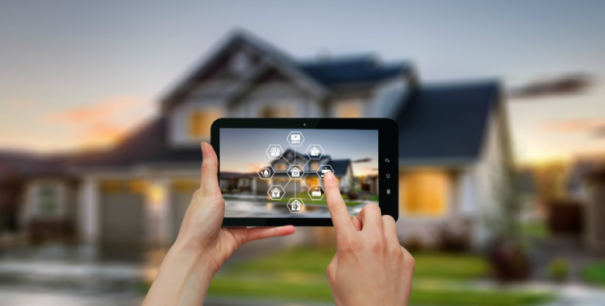
Setting Up Your Home Security System
Once your system is installed, it’s time to connect, configure, and optimize it for daily use.
Connecting and Configuring the Devices
Most modern security systems come with a hub—the central brain that connects all your devices. Use the accompanying mobile app or website to set up the system:
1.Download the mobile app: Connect the hub and devices like cameras, motion detectors, and sensors to your Wi-Fi network.
2.Device Placement: Ensure that each device is positioned strategically. For example, cameras should cover key entry points (front door, back door, garage), while motion detectors work best in hallways or large rooms.
3.Test Connections: Always perform a system-wide test to confirm that each device is properly connected and functioning.
Placement Tips for Cameras, Sensors, and Detectors
• Cameras: Position them at a height where they can’t easily be tampered with, and ensure they cover key access points without obstructions.
• Motion Sensors: Place these in high-traffic areas but avoid locations with heavy drafts or heat sources that can trigger false alarms.
• Window and Door Sensors: Place sensors on every accessible window and door.
.
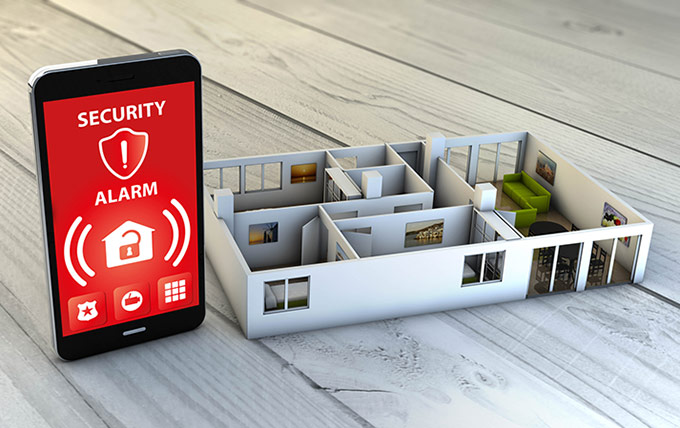
How to Use Home Security Systems Daily
To get the most out of your home security system, you’ll need to integrate it into your daily routine. Here’s how:
Arming and Disarming Your System
Most systems come with three modes:
1.Home Mode: Use this mode when you’re at home but want to ensure your perimeter is secure. Door and window sensors remain active, while motion sensors may be disabled.
2.Away Mode: When you’re out, this mode activates all sensors, including motion detectors.
3.Night Mode: Similar to home mode but with added monitoring for bedrooms or main living areas.
Make sure to arm your system before leaving or going to bed and disarm it using the app, key fob, or keypad when you return.
Managing Alerts and Notifications
Your system will send alerts to your phone or email based on triggers. It’s important to configure these notifications so you’re not overwhelmed by minor disturbances (e.g., a pet walking by), but also stay alert for serious threats.
Set up custom alerts for unusual activity, such as doors being opened at odd hours, or motion detected in areas where there shouldn’t be movement.
.
Advanced Features You Should Be Using
Home security systems today come loaded with advanced capabilities. Using these can greatly enhance your home’s protection.
Remote Access and Monitoring
With remote access, you can check your security system from anywhere in the world. The smartphone app or web dashboard lets you:
• Arm/disarm your system remotely.
• View live video feeds from your surveillance cameras.
• Respond to alerts—call authorities or sound the alarm.
Integrating Home Automation
Home automation and security systems now go hand-in-hand. When you integrate your home automation with your security system, you create a smart home ecosystem that enhances both convenience and protection. Here are some ways to maximize your system’s capabilities through automation:
1.Smart Lighting Integration: Program your lights to turn on automatically when motion is detected outside, simulating someone being home even if you’re away.
2.Automated Door Locks: Set up your system to automatically lock doors when you arm the system or unlock them when you disarm it.
3.Thermostat Control: Link your thermostat to your security system to adjust the temperature when you leave or return home, saving energy.
4.Voice Control: If you have a smart assistant (like Amazon Alexa or Google Assistant), you can control your security system hands-free by integrating voice commands.
Using these features helps you create a smart, secure home environment that responds to your lifestyle needs.
.
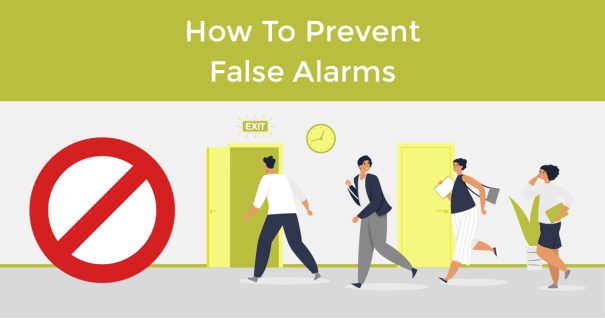
Preventing False Alarms
Nothing is more annoying—or stressful—than receiving an alert from your home security system, rushing to check your cameras, and discovering it was a false alarm. False alarms can be a nuisance, but they can also lead to fines in some municipalities or unnecessary dispatches from emergency services.
Common Causes and Solutions
Here are the most common causes of false alarms and how you can prevent them:
1.Pets: Your furry friends can trigger motion detectors if they move through monitored areas. Use pet-immune motion detectors, which can differentiate between human and pet movement, or adjust the sensitivity of your sensors.
2.User Error: Forgetting to disarm the system before entering your home is a frequent cause of false alarms. To avoid this, set up automatic disarming based on your phone’s GPS location, or use a key fob to disarm the system easily.
3.Drafts or Moving Objects: Curtains blowing in the wind, or even balloons and other lightweight objects, can cause sensors to trigger. Make sure that your sensors are placed away from areas where drafts or moving objects could set them off.
4.Low Battery: Many false alarms occur when a sensor’s battery is low or dying. Make it a habit to check and replace your batteries regularly, or set your system to alert you when battery power is low.
Best Practices to Avoid False Alarms
• Regularly Test Your System: Make sure everything is functioning as it should. This includes testing motion detectors, door/window sensors, and ensuring that cameras are correctly aligned.
• Update System Software: Keep your security system software and apps updated to ensure everything works smoothly.
• Train Family Members: Everyone in your household should know how to properly arm and disarm the system to avoid triggering alarms by mistake.
.
Maintenance and Troubleshooting
Like any piece of technology, home security systems require regular maintenance to function optimally. By keeping your system in top condition, you not only ensure its longevity but also guarantee your family’s safety.
Regular System Checkups
1.Monthly Tests: Run a monthly check of your entire system. This includes testing the alarm, checking for sensor placement issues, and making sure your cameras are functioning correctly. Many systems will offer a “test mode” that lets you verify everything without triggering a full-scale alarm.
2.Clean Cameras and Sensors: Dust, debris, and cobwebs can obstruct the lenses of your cameras or interfere with sensor function. Regularly clean your devices to maintain clear visibility and reliable performance.
3.Update Firmware: Manufacturers often release firmware updates to patch security vulnerabilities or add new features. Keep an eye out for these updates to ensure your system remains up to date.
Common Problems and How to Fix Them
1.Disconnected Cameras: If your security cameras keep going offline, check your Wi-Fi signal strength. Ensure that your cameras are within range of your router and consider using Wi-Fi extenders if necessary.
2.False Alarms: As discussed earlier, false alarms can usually be prevented by adjusting motion sensor sensitivity, replacing low batteries, and ensuring correct sensor placement.
3.App or System Lag: If the app connected to your system is slow or crashes, restart the system and ensure the app is updated. If the issue persists, check your internet connection and router performance.
.
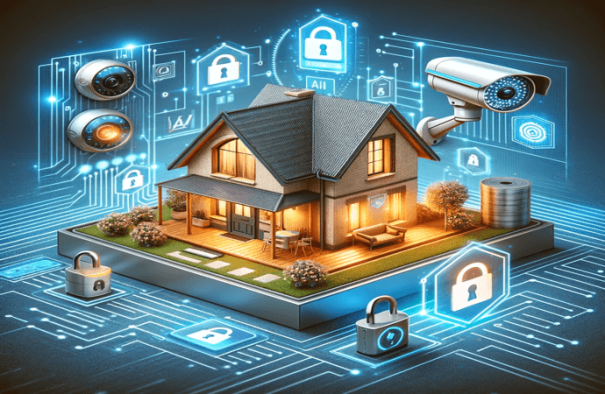
The Future of Home Security Systems
The home security industry is advancing rapidly, with new technologies continuously improving the safety and convenience of homeowners. Staying informed on these trends can help you make better choices when upgrading your system.
Trends in Home Security Technology
1.AI and Machine Learning: Artificial intelligence (AI) is transforming home security. AI-powered cameras can now recognize faces, differentiate between pets and humans, and even detect suspicious behavior patterns, offering more precise and reliable monitoring.
2.5G Connectivity: With the advent of 5G, security systems can operate faster and more efficiently, offering better streaming quality, faster response times, and more reliable connections.
3.Biometric Security: Biometric technology, including fingerprint recognition and facial recognition, is becoming more widespread. These features make it harder for intruders to bypass security and can add an extra layer of protection.
Smart Home Security Innovations
• Smart Doorbells: These devices are becoming increasingly sophisticated. Not only can they show live video of who’s at your door, but some now include two-way audio, package detection, and integration with virtual assistants.
• Drones for Home Security: Believe it or not, some companies are experimenting with drones as part of home security. These drones can patrol your property, offering real-time video surveillance in hard-to-reach areas.
• Integrated Health Monitoring: Home security systems are expanding into health-related features, particularly for the elderly. Systems can now monitor vital signs, track movement patterns, and detect falls, allowing for immediate emergency response.
By keeping an eye on these trends and innovations, you can ensure that your security system remains at the cutting edge.
.
Wrap-up
In the journey of safeguarding your home, an effective home security system is a must-have tool. From choosing the right system to installing and using it daily, this guide has walked you through every crucial detail. Remember, technology is only as powerful as how you use it, so take full advantage of the advanced features like remote monitoring, smart automation, and AI-driven capabilities.
The security of your home is an ongoing process. Regular maintenance, staying updated on the latest tech, and refining your security practices will keep you one step ahead of potential threats. With the knowledge shared in this guide, you now have the tools and insight to use home security systems effectively and ensure your family’s safety.
To recap, always:
• Choose the system that fits your specific needs.
• Stay proactive with installation, maintenance, and troubleshooting.
• Keep an eye on security trends and updates.
The safety of your home and loved ones is priceless, and with the right approach to home security, you can sleep a little easier at night knowing that you’ve taken every precaution.
.







1 thought on “How to Use Home Security Systems 2024”